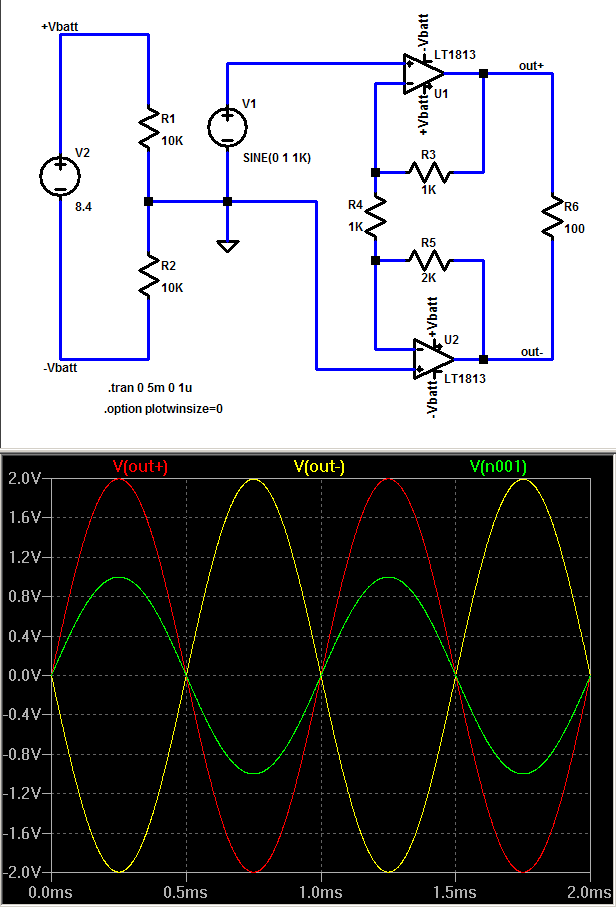kipman725
500+ Head-Fier
- Joined
- Nov 6, 2006
- Posts
- 530
- Likes
- 11
Hello I just finished designing this, I think it will work although I haven't built one yet, I don't expect it to sound very good as the output is unbuffered but I am quite poor at the moment and the only buffers I can find cost as much as the entire project each. This amplifier should also work with non balanced wired headphones by using two channels as ground. I apologise for the poor legibility of the schematic it's the first time I have used the software. I probably should have split the amplifier up to separate subsystems and drawn those individually.

For each channel there is a summing amplifier which adds +2v to the audio signals potential and then applies a gain of 2, the gain can be set between 1 and 3 with the 9v supply voltage. So there is effective gain of up to 6 from a 9v supply, any higher gain I think would risk clipping.
The +2v is produced by using the voltage across the LED and a voltage follower for each channel.
As there is no capacitors in the signal path the frequency response should be close to liner.
tell me what you think and if you have any tips on drawing better schematics

*and if it works your most welcome to build one and tell me what you think

http://www.rapidonline.com/netalogue/specs/82-0724.pdf (opamp used)

For each channel there is a summing amplifier which adds +2v to the audio signals potential and then applies a gain of 2, the gain can be set between 1 and 3 with the 9v supply voltage. So there is effective gain of up to 6 from a 9v supply, any higher gain I think would risk clipping.
The +2v is produced by using the voltage across the LED and a voltage follower for each channel.
As there is no capacitors in the signal path the frequency response should be close to liner.
tell me what you think and if you have any tips on drawing better schematics

*and if it works your most welcome to build one and tell me what you think

http://www.rapidonline.com/netalogue/specs/82-0724.pdf (opamp used)



